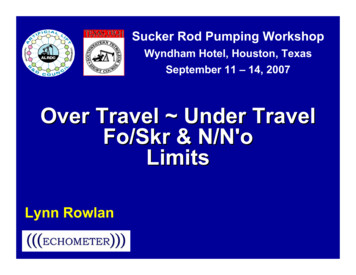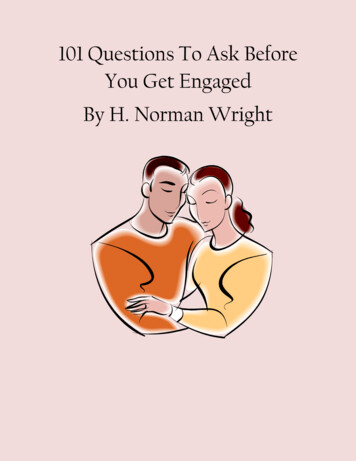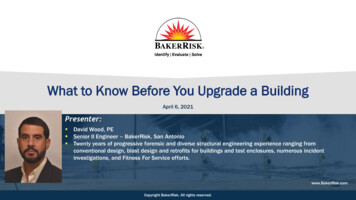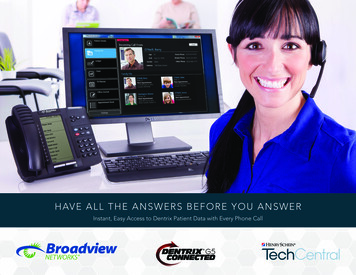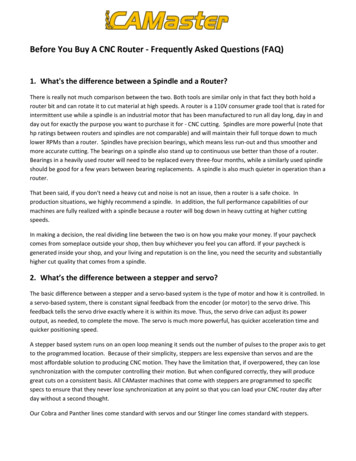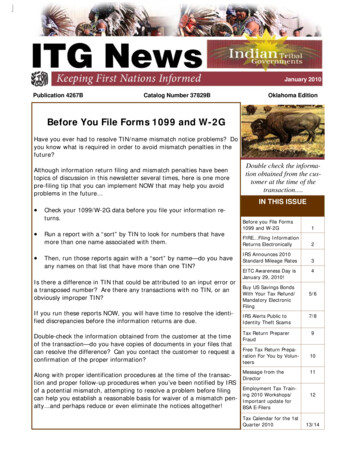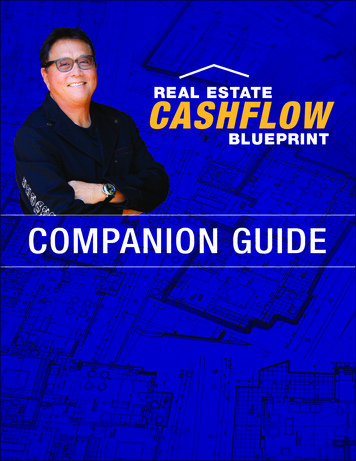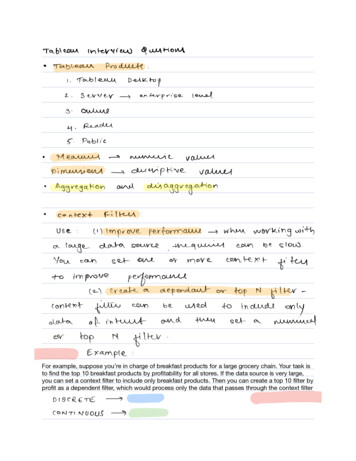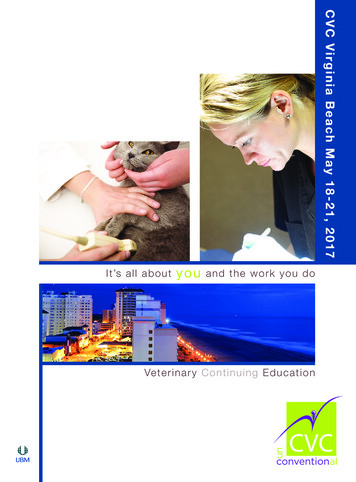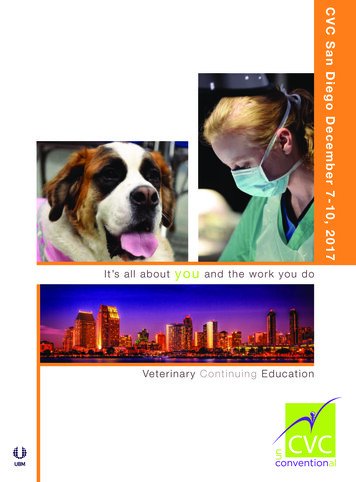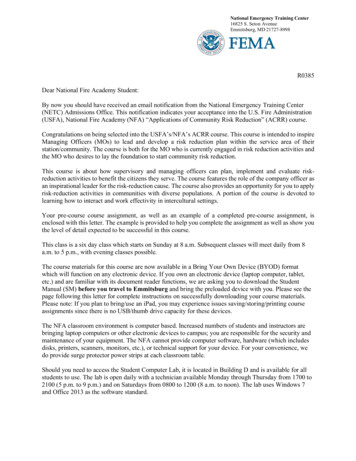
Transcription
National Emergency Training Center16825 S. Seton AvenueEmmitsburg, MD 21727-8998R0385Dear National Fire Academy Student:By now you should have received an email notification from the National Emergency Training Center(NETC) Admissions Office. This notification indicates your acceptance into the U.S. Fire Administration(USFA), National Fire Academy (NFA) “Applications of Community Risk Reduction” (ACRR) course.Congratulations on being selected into the USFA’s/NFA’s ACRR course. This course is intended to inspireManaging Officers (MOs) to lead and develop a risk reduction plan within the service area of theirstation/community. The course is both for the MO who is currently engaged in risk reduction activities andthe MO who desires to lay the foundation to start community risk reduction.This course is about how supervisory and managing officers can plan, implement and evaluate riskreduction activities to benefit the citizens they serve. The course features the role of the company officer asan inspirational leader for the risk-reduction cause. The course also provides an opportunity for you to applyrisk-reduction activities in communities with diverse populations. A portion of the course is devoted tolearning how to interact and work effectivity in intercultural settings.Your pre-course course assignment, as well as an example of a completed pre-course assignment, isenclosed with this letter. The example is provided to help you complete the assignment as well as show youthe level of detail expected to be successful in this course.This class is a six day class which starts on Sunday at 8 a.m. Subsequent classes will meet daily from 8a.m. to 5 p.m., with evening classes possible.The course materials for this course are now available in a Bring Your Own Device (BYOD) formatwhich will function on any electronic device. If you own an electronic device (laptop computer, tablet,etc.) and are familiar with its document reader functions, we are asking you to download the StudentManual (SM) before you travel to Emmitsburg and bring the preloaded device with you. Please see thepage following this letter for complete instructions on successfully downloading your course materials.Please note: If you plan to bring/use an iPad, you may experience issues saving/storing/printing courseassignments since there is no USB/thumb drive capacity for these devices.The NFA classroom environment is computer based. Increased numbers of students and instructors arebringing laptop computers or other electronic devices to campus; you are responsible for the security andmaintenance of your equipment. The NFA cannot provide computer software, hardware (which includesdisks, printers, scanners, monitors, etc.), or technical support for your device. For your convenience, wedo provide surge protector power strips at each classroom table.Should you need to access the Student Computer Lab, it is located in Building D and is available for allstudents to use. The lab is open daily with a technician available Monday through Thursday from 1700 to2100 (5 p.m. to 9 p.m.) and on Saturdays from 0800 to 1200 (8 a.m. to noon). The lab uses Windows 7and Office 2013 as the software standard.
If you need additional information related to the course content or requirements, please contact Mr.Michael Weller, Fire Prevention Public Education Training Specialist, at (301) 447-1476, or by email atmichael.weller@fema.dhs.gov. Good luck, and I hope to see you on campus.Sincerely,Eriks J. Gabliks, SuperintendentNational Fire AcademyU.S. Fire AdministrationEnclosures
National Fire Academy Bring Your Own Device (BYOD)Course Materials/Download InstructionsThe first step is to download ADOBE Reader to your device. This will enable you to read and manipulatethe course materials. ADOBE Reader can be used to comment and highlight text in Portable DocumentFormat (PDF) documents. It is an excellent tool for note-taking purposes.For Laptops and ComputersADOBE Reader can be downloaded from www.adobe.com/downloads/. It is a free download. Please notethat depending on your settings, you may have to temporarily disable your antivirus software.For Tablets and Other Similar Hand-Held DevicesADOBE Reader can be downloaded onto devices such as iPads, android tablets, and other hand-helddevices. ADOBE Reader for these types of devices can be found in the device’s Application Store usingthe search function and typing in “ADOBE Reader.” Follow the instructions given. It is a freeapplication. Note: In order to have the editing capabilities/toolbar, the document needs to be “openedwith ADOBE Reader.” There should be a function on your device to do this.After you have successfully downloaded the ADOBE Reader, please use the following Web link todownload your R0385, “Applications for Community Risk Reduction” (ACRR) Student Manual (SM).(You may copy/paste this link into your Web browser.)https://nfa.usfa.fema.gov/ax/sm/sm 0385.pdfNote: Please make sure you download the ADOBE Reader first. To open the SM, you will need to openthe ADOBE Reader and then open the SM through the ADOBE Reader in order for the note-taking toolsto work properly.If you need assistance, please contact nfaonlinetier2@fema.dhs.gov.
APPLICATIONS OF COMMUNITY RISK REDUCTIONName:Department:Position:Daytime Phone:Email:Dates of Class:Type of Profile:Entire CommunityStation Service Area OnlyApplications of Community Risk ReductionGraded Pre-Course AssignmentWelcome to the “Applications of Community Risk Reduction” (ACRR) course. ACRR is intendedto inspire managing officers to lead and conduct risk-reduction activities within the service area oftheir station/community.ACRR is about how the managing officer can plan, implement and evaluate risk-reductionactivities to benefit the residents they serve and those in the fire and emergency services whoprovide the services. The course features the role of the officer as a champion for the risk-reductioncause. The course also provides an opportunity for the managing officer to apply risk-reductionactivities in communities with a diverse population.You will learn that a broader approach to risk reduction involves multiple interventions, and whenall are applied to a specific community risk issue, a difference is likely to occur, reducing risk forcivilians as well as those in emergency services.As part of the ACRR course, you will complete a series of activities that will result in the creationof a draft plan of action for addressing a risk in your service area or community. You will needdata from your local community to successfully accomplish this task.Please note: If you are a company-level officer, you will seek information pertinent to your servicearea. If you are in a position that oversees an operation that is communitywide, you will seekinformation covering the entire area that your department serves. At the top of the page, you willsee “Type of Profile” for you to indicate which type of area you are building a profile for.We realize that some of the information asked for may be challenging to obtain. Please do yourbest to obtain the data, as it will build the foundation for a risk assessment of your community andservice area. The instructors want to see that you put forth a good effort in obtaining theinformation to the best of your ability.Most National Fire Academy (NFA) community risk-reduction courses have a pre-courseassignment. While each pre-course assignment has sections that are exclusive to the specificcourse, nearly all require students to come to the NFA with data about their community’sdemographics and risk issues. Please check with colleagues who have recently (within the lastyear) attended an NFA risk-reduction course to see if they may be able to help you with datacollection. Save the data you collect on your community, as you may be able to use it as a baselineshould you attend future risk-reduction courses.1
APPLICATIONS OF COMMUNITY RISK REDUCTIONThere are six parts to the ACRR pre-course assignment. Directions are provided that identify thedepth of effort you are expected to put into each part. The actions you need to take are in blocksand noted as “Action Items.” Before you begin, here is a general overview of what you will bedoing: Part 1 calls for reading a FEMA publication entitled “A Whole Community Approach toEmergency Management: Principles, Themes, and Pathways for Action.”It also requires completion of two NFA online self-study courses on community riskreduction. Each course will take approximately four hours to complete. Part 2 involves researching your department’s mission statement. In addition, you willdevelop speaking points so you can discuss a current risk-reduction program that yourdepartment offers. Part 3 involves developing a demographic overview of your service area. Part 4 requires exploration of the man-made and naturally occurring hazards/risk issuesthat are impacting your service area. This section is the most labor intensive of the overallassignment. It also includes several Action Items. Part 5 requires you to describe a high-risk location within your service area. Part 6 asks you to sign up for Fire is Everyone’s Fight (not graded).The ACRR pre-course assignment is a graded assignment worth 200 points (1/3 of your NFAgrade for this course). Here is how you will be evaluated:Assessment AreaAssessment CriteriaPart 1: Complete two NFAonline self-study courses.Certificates of completion are documented bythe student. (50 points for each course)Part 2: Locate missionstatement and identify currentcommunity risk-reductionprograms.Mission statement is listed. A currentcommunity risk-reduction program offeredby your department is identified.Part 3: Define your servicearea and its associateddemographics.Geographic boundaries of station service areaare defined, and community demographicsare explained.2PointsAwarded/100/25/25
APPLICATIONS OF COMMUNITY RISK REDUCTIONPart 4: Analyze servicedemand data.After analyzing response data, a profile of atleast four types of service demands worthy offurther exploration is created.Where a student is unable to gather therequested data for analysis, an explanation isprovided in writing as to why the data couldnot be obtained.Part 5: Explore high-risksections of your service area.Demographics and service demands areexplored to identify potential high-riskneighborhoods or localities in the servicearea./25/25Please plan to invest eight hours on the self-study courses and several additional hours working onthe pre-course material. The written components of your assignment should be word processed,saved and brought with you to the NFA on your laptop computer (or other portable device).So we can grade your work, please print a hard copy of your certificates from the onlinecourses and the written components of the assignment outlined below. You will submit it tothe instructors on the first day of class. The assignment should be placed in a binder ornotebook and divided into sections. The instructors want to see you put forth a good faitheffort in completing the assignment. It is not possible for us to evaluate your data. We knowmany of you will have issues in acquiring what is asked for in the assignment. The mostimportant thing for you is to hand in your assignment the first morning of class. To ensureyou receive credit, please use the correct format so we can see you completed the assignmentto the best of your ability. Note: You do not have to print massive spreadsheets of responsedata. Simply bring those files with you in electronic format, as you will be using them in class.Here is your assignment:PART 1: READ FEMA PUBLICATIONCOMPLETE TWO NFA ONLINE SELF-STUDY COMMUNITY RISK REDUCTIONCOURSESBegin by reading a FEMA publication entitled “A Whole Community Approach to EmergencyManagement: Principles, Themes, and Pathways for Action.”Next, please take two NFA online self-study courses on community risk reduction.You should take the courses listed in the order shown below. Information from both courses willbe used extensively during your on-campus NFA experience.Course One: Introduction to Strategic Community Risk Reduction og/details/10802ISCRR will provide you with a basic understanding of what constitutes strategic-level riskreduction.3
APPLICATIONS OF COMMUNITY RISK REDUCTIONCourse Two: Introduction to Community Risk Assessment g/details/10807ICRA will enlighten you on how to perform a basic community risk assessment.NOTE: Failure to complete the two online self-study courses will make it impossible toreceive an “A” in the course due to their value within the overall assessment plan.PART 2: YOUR DEPARTMENT’S MISSION STATEMENT AND COMMUNITYRISK-REDUCTION PROGRAMSMost fire departments have a mission statement that provides a high-level directive as to theservices it provides. Also, most fire departments offer community-based risk-reduction programs.Part 2 — Action Item:1.Copy your organization’s mission statement and bring it to class.2.Networking with peers is an important component of the NFA experience. You shouldbe prepared to discuss a current risk-reduction program being offered by yourdepartment that your station is involved with. This could be any type of riskreduction program, not exclusively fire-related. As part of the discussion, you will beasked to: Explain the scope of the program. Highlight both the strengths and challenges associated with the program. Offer an opinion as to the level of impact the program is making and how it isbeing measured.Please make a few bullet points about the program so you are prepared to discuss it.Also, bring whatever you would like to support the above. Often, students will bring anoverview of a program that can be shared electronically with others, such as a writtenoverview, PowerPoint presentation, etc.4
APPLICATIONS OF COMMUNITY RISK REDUCTION5
APPLICATIONS OF COMMUNITY RISK REDUCTIONPART 3: DEFINE YOUR SERVICE AREAA logical first step in the risk-reduction assessment process is the ability to succinctly explain thedemographics of your overall city/community and the specific service area you protect. Think ofthis as being able to explain to a stranger what your city and specific service area look like withintwo minutes (you will be doing this in class, so be prepared).As you learned in the online self-study courses, a good way to build a basemap of what yourexisting service area looks like is to divide it into four environments. Natural environment: includes the geography (landscape) of your service area, such ashills, valleys, vegetation, bodies of water, climate, weather, wildland interface, etc. Built environment: includes everything put in place by man. Includes the buildings, typesof occupancies, housing density, construction types, etc. It also includes other criticalinfrastructure, such as highway systems, utilities, communication networks, etc. Social environment: includes everything relating to people, such as populationdistributions, ages, race, gender, culture, ethnicity, languages spoken, education levels,socioeconomics, etc. Response environment: the Standards of Cover currently in place to provide responseservices. This includes station locations, equipment, staffing, training levels, responsetimes, etc.When exploring the social environment, a good web-based tool to help you build a brief butinformative demographic profile of your community can be found at www.usa.com. This siteprovides up-to-date demographic information from the U.S. Census Bureau. Data for theDecennial Census is collected by the Bureau every 10 years and is used to determine congressionaldistricts. The Decennial Census seeks to determine the number of people who live in a community.Let us look at an example of how to get demographical information for a city (or community) as awhole.You simply go to the website, search for your city and click on the basic information tab. Next,explore what is available under categories, such as population/race, income/careers, etc. Anexample screenshot featuring Hagerstown, Maryland, is displayed below.Note: When initiating the search, please use your city’s name followed by the abbreviation foryour state, such as “MD,” “PA,” etc.6
APPLICATIONS OF COMMUNITY RISK REDUCTIONExplore usingthese tabs.Stop and explore your city or community demographics, as a whole, to gain practice using the tool.Let us continue with the next step. A second type of census, the American Community Survey(ACS), is as an on-going task of the Bureau. The ACS is mailed to over three million U.S. residentsannually. The Bureau’s goal is to survey each U.S. resident every seven years to createdemographic profiles of local communities. ACS data is important to risk-reduction specialistsbecause it provides information about where and how people live.Data from the ACS allows us to explore demographic data both communitywide and by censustracts. Census tracts are defined geographical areas within a city, town, county or village.Census tracts generally have a population size between 1,200 and 8,000 people, with an optimalsize of 4,000 people. Each tract carries a numerical identification. The number of census tracts ina community is based upon its size and population. The size of the tract is related to the numberof people living there. You may be from a geographical area that has anywhere from a few censustracts (rural area) to hundreds of census tracts (urban city).To drill down on smaller parts of specific geographical areas, census tracts can be divided furtherinto census block groups and then into individual blocks. A census block group is a geographicalunit that’s between the size of a census tract and a census block. A block group is the smallestgeographical unit for which the bureau publishes sample data (i.e., data which is only collectedfrom a fraction of all households). Typically, block groups have a population of 600 to 3,000people. A census block is the smallest geographic unit used by the bureau for tabulation of 100percent data (data collected from all houses rather than a sample of houses). In an urban city,census blocks are often as small as one or two city blocks. Let us look at an example:7
APPLICATIONS OF COMMUNITY RISK REDUCTIONRecall the first screenshot example from Hagerstown, Maryland. What you see above is ascreenshot displaying the bottom of the basic information page. We have clicked on the censustract field shown on the right side of the screen. The example is displaying the number of censustracts in Hagerstown. The red shaded area represents the corporate boundary of the city. Each blueballoon represents a census tract.The only way to become proficient at using this tool is to practice with it. While it may appear alittle intimidating as you begin practicing, this tool is very user friendly. You should now takesome time to explore your city or community in a magnified scale.Begin by searching for your city. (Remember to use the state abbreviation, such as “MD” or “PA.”)A map will be displayed showing the outline of your city. Go to the right side of the screen, locatethe “Cities” tab and click on it. On the map, there should be a blue balloon identifying your cityand the incorporated towns around it. There will also be a red dash beside the city category on theright side of the screen.Next, locate the census tract feature and click on it. You should see a display similar to what isdisplayed on the Hagerstown screenshot above. Note: If you are searching an urban city, do notpanic when you see a huge amount of blue balloons. Hagerstown has a population of 39,000. Thelarger the city, the more census tracts there are. Simply drill down on the area you wish to exploreby clicking on it or using the zoom feature.Find the census tract or tracts that represent the area you wish to explore. Click on the blue balloonfor the cens
Most National Fire Academy (NFA) community risk-reduction courses have a pre-course assignment. While each precourse assignment has sections that are exclusive to the specific- course, nearly all require students to come to the NFA with d
